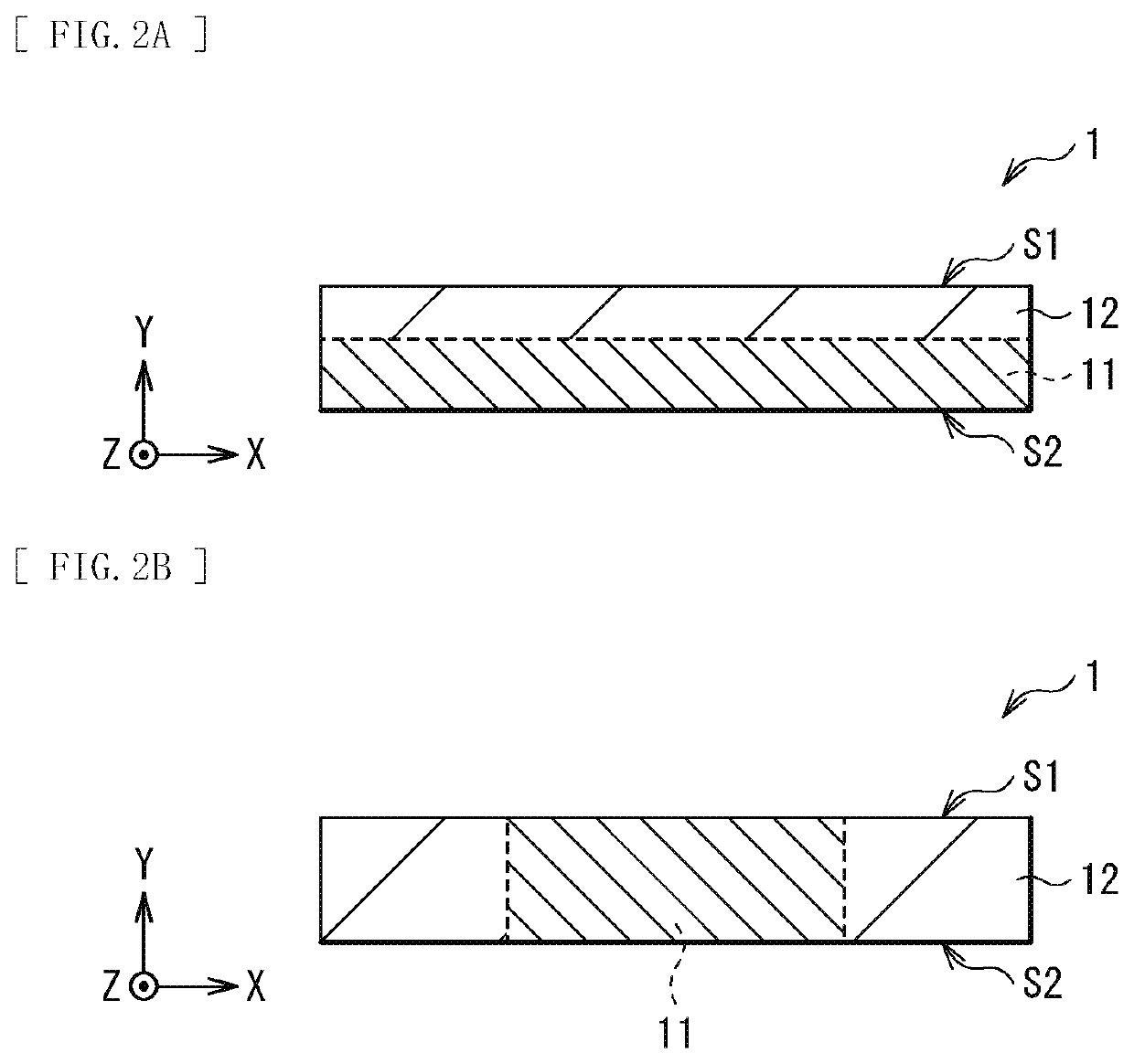Electrode and sensor
a technology applied in the field of electrodes and sensors, can solve problems such as characteristics deterioration, and achieve the effects of reducing contact impedance of living bodies, accurate potential measurements, and deterioration of mountability
- Summary
- Abstract
- Description
- Claims
- Application Information
AI Technical Summary
Benefits of technology
Problems solved by technology
Method used
Image
Examples
embodiment
1. EMBODIMENT
[0033]Part (A) of FIG. 1 schematically illustrates an example of a planar configuration of an electrode (an electrode 1) according to an embodiment of the present disclosure, and Part (B) of FIG. 1 schematically illustrates an example of a cross-sectional configuration of the electrode 1 taken along a line I-I illustrated in Part (A) of FIG. 1. The electrode 1 is used as an electrode of a biological sensor that is brought into contact with a living body to measure the potential, for example. The electrode 1 of the present embodiment has a configuration in which, in a substrate forming the electrode 1, a conductive material (a first conductive material) and a conductive material having non-polarizable property and ionic bonding (a second conductive material, hereinafter referred to as a non-polarizable material) are included, and a first region 11 and a second region 12 are formed that are different from each other in the concentration ratio between the conductive materi...
application examples
2. APPLICATION EXAMPLES
[0059]Next, description is provided of application examples of an electronic apparatus that includes the electrode 1 (or any of the electrodes 1A to 1C) described in the above embodiment. However, the configuration of the electronic apparatus described below is merely an example, and it is possible to change the configuration as appropriate. The above-described electrode 1 is applicable to various sensors, various electronic apparatuses, or a portion of furnishings that detect or measure, for example, perspiration, body temperature, a perspiration ingredient, skin gas, blood sugar, and the like. For example, the above-described electrode 1 is applicable, as a so-called wearable device, to a portion of furnishings such as a watch (a wristwatch), a bag, clothes, a hat or a cap, glasses, and shoes. Types of the applicable electronic apparatuses and the like are not particularly limited.
application example 1
[0060]FIG. 6 illustrates a schematic configuration of a biopotential sensor. The electrode 1 of the present embodiment is usable as a measuring section (a sensor 110) that allows for measuring a biopotential or a bioimpedance by performing modification or geometric processing on an electrode surface on an as-needed basis, and by coupling the electrode 1 to a controller 120, a wiring line 130, and a circuit 140.
PUM
| Property | Measurement | Unit |
|---|---|---|
| particle size | aaaaa | aaaaa |
| particle size | aaaaa | aaaaa |
| non-polarizable property | aaaaa | aaaaa |
Abstract
Description
Claims
Application Information
 Login to View More
Login to View More - R&D
- Intellectual Property
- Life Sciences
- Materials
- Tech Scout
- Unparalleled Data Quality
- Higher Quality Content
- 60% Fewer Hallucinations
Browse by: Latest US Patents, China's latest patents, Technical Efficacy Thesaurus, Application Domain, Technology Topic, Popular Technical Reports.
© 2025 PatSnap. All rights reserved.Legal|Privacy policy|Modern Slavery Act Transparency Statement|Sitemap|About US| Contact US: help@patsnap.com



